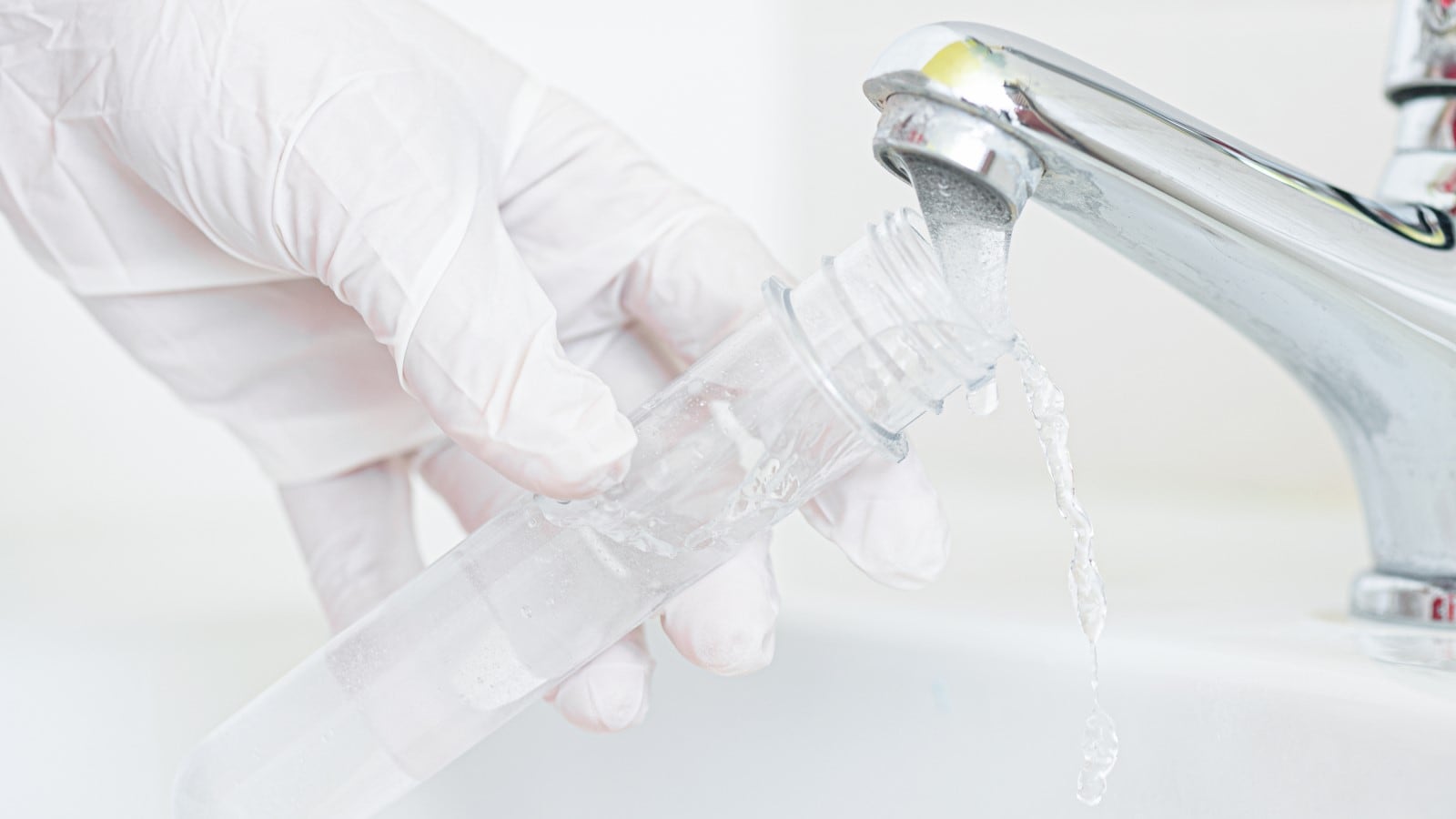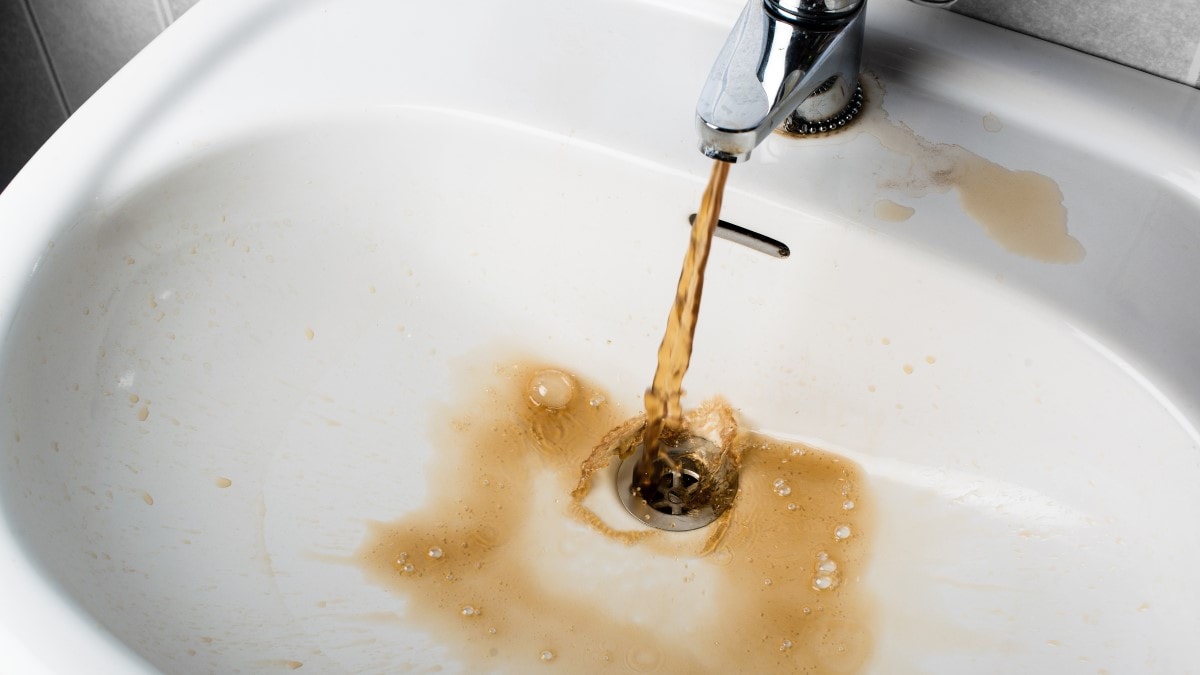Key points
- Test your well water at least once every year for total coliform bacteria, nitrates, total dissolved solids, and pH level.
- Contact your health department to find out what other germs or chemicals to test for based on where you live.
- Use a state-certified laboratory to test your water.
- Your health department can help you understand your test results and what to do next.

Why it's important
As a water well owner, you are responsible for testing your well to make sure the water is safe to drink.
The U.S. Environmental Protection Agency's (EPA) rules that protect public drinking water systems do not apply to privately owned wells. Government officials do not regulate, treat, or monitor tap water from private wells. However, your local government can help you get your well water tested.
What to test for
At least once every year, test your well water for:
- Total coliforms (specific types of bacteria)
- pH
- Total dissolved solids
- Nitrates
- Other germs and chemicals of concern in your area
Water quality indicators
Water quality indicators—such as coliforms, pH, and total dissolved solids—help you understand if your water may contain harmful germs or chemicals. Water quality indicators are typically not harmful themselves. Instead, they indicate that your water may be contaminated with something else, such as poop, that could make you sick.
Key water quality indicators to test for
Test for total coliforms. If the total coliform count is high in your water, it is likely that harmful germs—including certain viruses, bacteria, and parasites—are also in your water.
Coliform bacteria live in people's and animals' digestive systems (guts), in soil, on plants, and in surface water like lakes or rivers. These bacteria generally will not make you sick. However, coliform bacteria typically get into your water the same way as germs that do cause disease (for example, from a sewage leak), and are much easier to test for.
You can also test for fecal coliforms or E. coli. A positive test for fecal coliforms or E. coli likely means that poop (feces), and the harmful germs in poop, have gotten into your well water.
Fecal coliform bacteria are a specific kind of total coliform. People's and animals' poop contain millions of these bacteria. The bacteria E. coli is part of the fecal coliform group and you can test for it by itself. Fecal coliforms and E. coli are usually harmless. However, some specific types of E. coli can make you seriously sick. A water quality indicator test for E. coli will not show whether the water contains the dangerous types of E. coli. If you suspect your water is contaminated with a dangerous type of E. coli, you will need to use a more specific type of test to find it.
Test the pH. The pH level tells you how acidic or basic your water is. The pH level of the water can affect your water pipes and how your water looks and tastes. If the pH of your water is too low or too high, it could damage your pipes. Heavy metals like lead can leak out of damaged pipes into the water and eventually make you sick.
Test for total dissolved solids. Testing for total dissolved solids tells you how much "stuff" (for example, calcium or sodium) is mixed in your water. This can affect how your water looks or tastes. Water with higher levels of dissolved solids is more likely to leave scales or buildup on your water pipes or devices.
Harmful germs and chemicals
To find out which harmful germs and chemicals you should test your well water for, check with:
- Your local health department
- Your local environmental department
- The U.S. EPA by calling their Drinking Water Hotline at (800) 426-4791
The types of germs and chemicals you should test for depends on:
- Where your well is located on your property
- The state or region you live in
- Whether you live in a rural or urban area
Key chemicals to test for
All well owners should test for nitrates at least once every year. Ask your health or environmental department, or the U.S. EPA, if you should also test your well water for:
- Volatile organic compounds
- Lead
- Arsenic
- Mercury
- Radium
- Pesticides or herbicides
- Other chemicals or specific germs
High levels of nitrates in your water can make you, and especially babies, sick. Nitrates in your well water can come from animal waste, septic systems, wastewater, flooded sewers, polluted storm water runoff, fertilizers, runoff from farms, and decaying plants. Whether you have nitrates in your well water also depends on the geology around your well. If your water has high levels of nitrates, other harmful chemicals or germs might also be in your water. Contact your local health department for recommendations about testing for other chemicals or germs.
Volatile organic compounds (VOCs) are industrial and fuel-related chemicals that can make you sick. Which VOCs to test your well water for depends on where you live. Some VOCs to ask about testing for are benzene, carbon tetrachloride, toluene, trichloroethelene, and methyl tertiary butyl ether (MTBE).
Steps to take
When to have your well tested
At a minimum, check your well every spring to make sure there are no mechanical problems. Test your well water at least once each year for total coliform bacteria, nitrates, total dissolved solids, and pH levels.
If you ever think your well is contaminated with other harmful germs or chemicals, test for those as well. However, spend time identifying potential problems as these tests can be expensive. Start by asking your health department about germs and chemicals of concern locally.
You should also have your well water tested if:
- You are notified that there are problems with well water in your area
- There are problems near your well, such as flooding, land disturbances, or nearby waste disposal sites
- You replace or repair any part of your well system
- You notice a change in your water's taste, color, or smell
- You or someone you live with becomes pregnant
- A child starts living with you

Who should test your well
Use a state-certified laboratory to test your water. Local or state health departments or environmental departments often test for nitrates, total coliforms, fecal coliforms, volatile organic compounds, and pH. These departments or your county government should have a list of the state-certified (licensed) laboratories in your area that test for different germs and chemicals.
